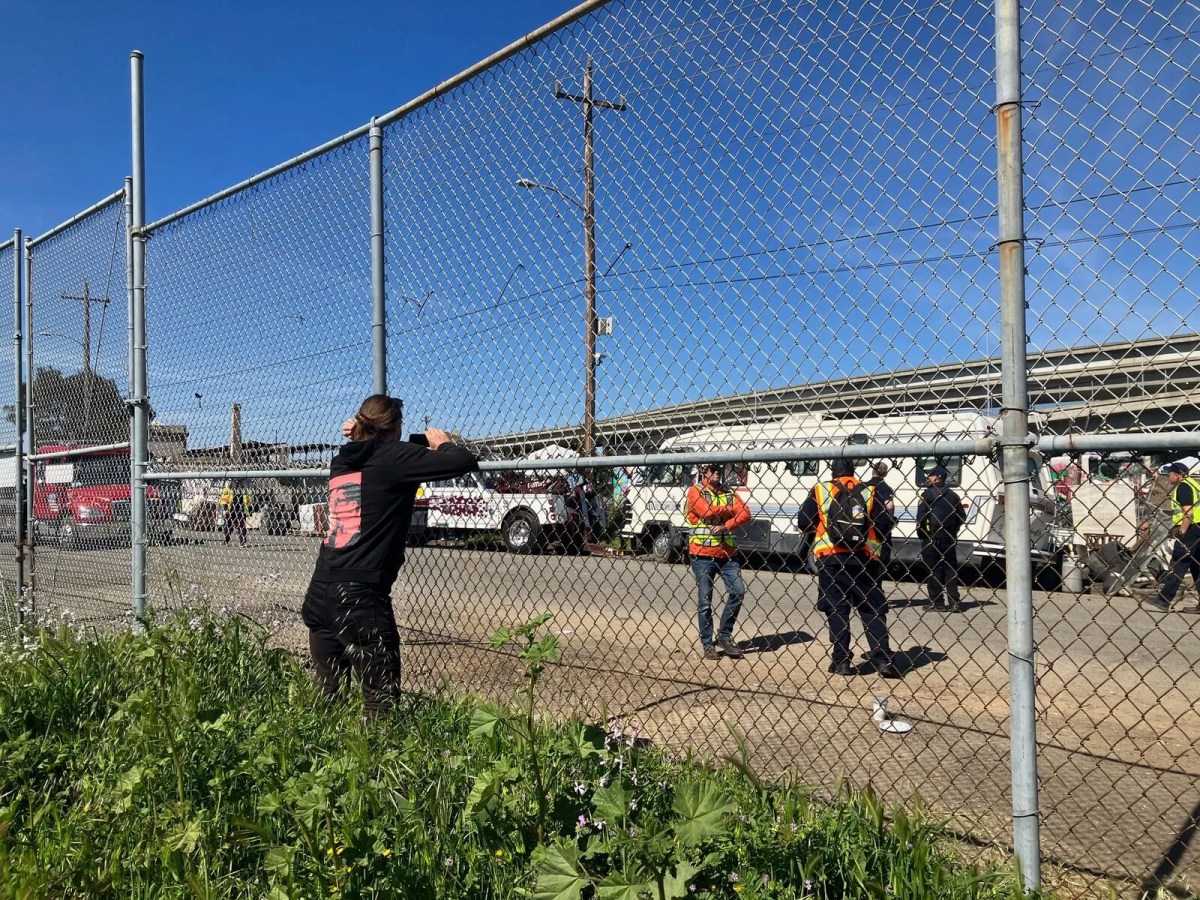City work crews and utility workers can now establish “safe work zones,” areas off limits to the public, at work sites including homeless encampments, per a law passed by the City Council on Tuesday.
If someone refuses to leave a safe work zone after a police officer orders them to, they can be arrested and charged with a misdemeanor under the new law, which was first proposed in 2022.
Workers and union representatives came to the council meeting in droves to support the policy, saying it will protect them against increasing threats and violence they’ve faced on the job.
However, several homeless people and advocates argued that the new law will give the city cover to banish or arrest homeless people while shutting down encampments, and prevent others from observing the actions of the city at these events.
The legislation was passed on the council’s “consent calendar,” a batch of several items approved with a single vote and no debate by the council, typically reserved for routine and less-controversial matters.
“Protecting our city workers, our city contractors, and our homeless community is not at odds,” said Council President Nikki Fortunato Bas, who supported the policy. She and other officials said the city needs to focus on expanding affordable housing options for people living in camps that get closed.
“Safe work zones” refer to any clearly marked boundary established by a city worker or city contractor or utility worker directly around a work site on public property or the worker’s vehicle.
The Oakland Public Works Department has cited several recent incidents that officials say call for this new layer of protection, including a case where a supervisor was assaulted at an East Oakland homeless camp, an incident where sewer maintenance workers were threatened by someone wielding a sharp object, and another where a parking official was bit by a dog when moving cars at an encampment.
“My coworkers and I have found ourselves being targets of anger and frustration from customers as we try to perform our work and provide a vital service for everyday life here in Oakland,” said a PG&E high-voltage cable splicer, one of many IBEW 1245 members at Tuesday’s meeting. “Times are hard and we understand that. But we should be able to feel safe when on the job.”
“I’ve personally been on the job where I’ve been robbed at gunpoint and I have to go home and face that I have a wife and three kids,” said another worker at the meeting.
In a letter to the council, a coalition of lawyers and advocates opposing the policy called it “duplicative,” noting that police already have the authority to arrest people for committing crimes like robbery, assaults, and equipment theft, and are often stationed at encampment operations.

SEIU 1021, a union representing about 1,000 city workers, also turned out to support the policy.
“This is something we’ve been talking to the city administration about on-and-off over the years—thank you for listening to us,” said Felipe Cuevas, the union’s Oakland chapter president.
SEIU has not always appeared to fully back the legislation. While organizer Ariana Casanova told The Oaklandside in November 2022 that the union supported safe work zones, she then spoke at a Public Works Committee meeting that December, telling officials, “You don’t need to pass more legislation.” She noted that the union already has procedures and agreements in place with the city and has communicated steps that should be taken around worker safety without “criminalizing the poor.”
Several homeless people and supporters raised similar concerns Tuesday.
“I support worker safety, but the application of this ordinance during encampment sweeps will be incredibly harmful,” said Brigitte Nicoletti, an East Bay Community Law Center attorney who represents homeless people. “In practice, it will further criminalize the unhoused community by making it a misdemeanor for them to remain in their homes during sweeps.”
Nicoletti said the law raised “serious constitutional concerns” because it could prevent advocates from observing or documenting camp closures, including watching to see if workers are following laws around storing belongings.
Speakers also questioned whether the zones would allow the city to skirt its Encampment Management Policy, which says nobody can be arrested for camping or sleeping outside.
“People’s homes are not work zones,” said Jaz Colibri, a former resident of the Wood Street encampment.
The ordinance passed Tuesday says safe work zones can only be established to protect workers, not to limit observation, protests, or freedom of the press.
After the policy was originally slated to be heard by the City Council in December 2022, Bas pulled it from the agenda at the time, saying more clarity was needed on how it would interact with existing protocol.
Already, city workers often establish boundaries around homeless camps they’re closing, or locations where they’re operating heavy equipment. For example, the city installed a large fence around the Wood Street camp in April during the closure of that large site—prohibiting most members of the public, including the press, from entering, but permitting residents and select advocates inside.
When the safe work zone policy was reintroduced this November, it was expanded to include non-city infrastructure workers. In a report, Deputy City Administrator Joe DeVries said city staff met with representatives from PG&E, AT&T, EBMUD, and Comcast this year and heard their workers were facing safety issues in Oakland too.
The ordinance will need a second vote of approval at an upcoming council meeting before going into effect.

